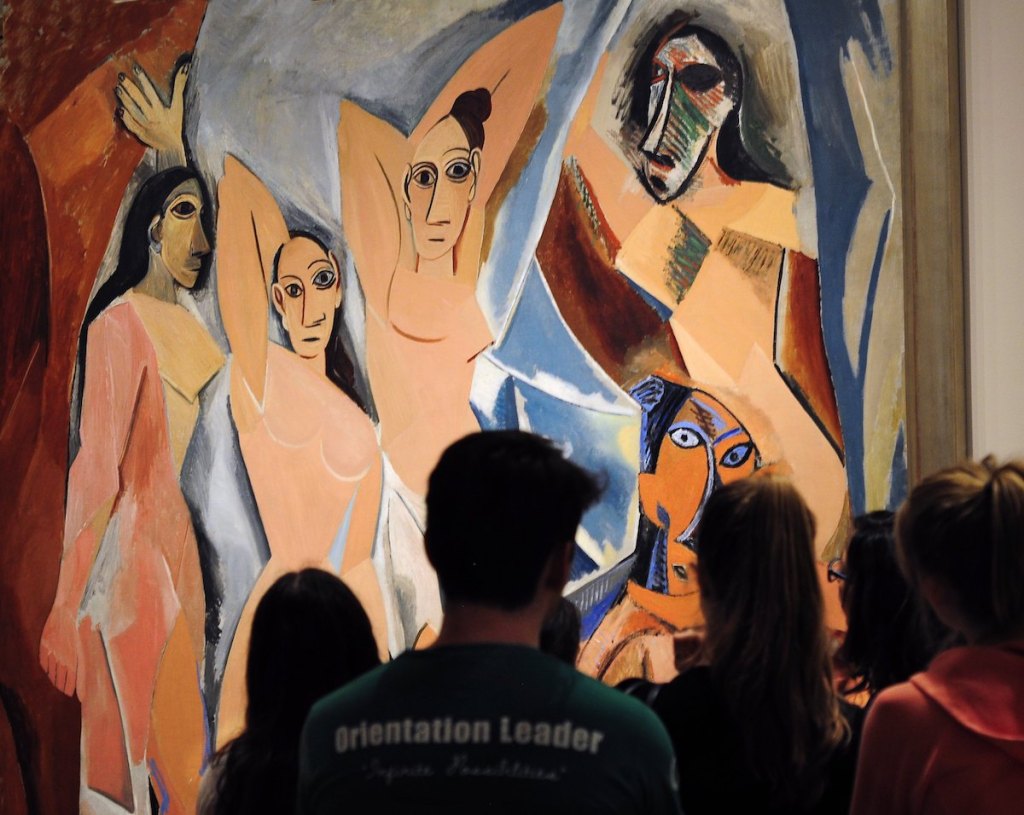New scholarship suggests that a pivotal Pablo Picasso painting—one that helped spur on modernism more broadly—may have been inspired by Medieval church frescoes in the Spanish Pyrenees rather than African art, as many art historians have previously suggested.
The canvas in question, Les Demoiselles d’Avignon (1907), depicts five nude women, some of whom appear to have masks for faces. Utilizing techniques derived from Cubism, Picasso fractured the women’s bodies and the background behind them.
African art has long been put forward as the main inspiration for Les Demoiselles d’Avignon, which as painted after a visit to Paris’s first anthropological museum, the Musée d’Ethnographie du Trocadéro, in June 1907. Picasso attempted to distance the work from the African art he saw there, however. “Black art? I don’t know it,” Picasso said in a 1920 interview.
Related Articles

Now, French collector and self-proclaimed “art detective” Alain Moreau has published a paper in the Bulletin of the Reial Acadèmia Catalana de Belles Arts Sant Jordi claiming that Picasso’s engagement with African art and artifacts began after he had already completed Les Demoiselles d’Avignon. The Times of London first reported news of Moreau’s paper.
Moreau believes that inspiration for the piece can be found among the now-lost frescoes in the church of La Vella de Sant Cristòfol in Campdevànol and the Romanesque murals of Sant Martí de Fenollar in the foothills of the French Pyrenees south of Perpignan.
As part of his research, Moreau retraced the artist’s travels, including a possible detour on the way to Gósol, Spain, in 1906. Joan Vidal Ventosa, a friend and art lover, suggested Picasso visit these locales. The paintings inside were supposedly gaining traction among Catalonia’s intellectual elite at the time and feature similar qualities to those found in Les Demoiselles d’Avignon such as facial markings, angular forms, and colorful palettes.
Moreau also pointed out that the African mask that was on view alongside Les Demoiselles d’Avignon in a 1939 retrospective at the Museum of Modern Art in New York was not in Europe until 1935—nearly three decades after the painting was finished. At the time, however, curator Alfred Barr claimed the mask directly inspired the work.
Artists and historians have long debated the origin of inspiration behind Les Demoiselles d’Avignon, with some citing the blatant cultural theft of Black art, while others have argued for its purposefully enigmatic qualities.
Still, Moreau argues that the color palette, as well as the portrayal of the women’s facial contours and the eyes, more acutely recall Catalonia’s Medieval church paintings. He also cited the chirimbolo, the mysterious mark on one figure’s face, which is often interpreted as an ear, a tumor, or an arm. The mark draws inspiration from the abstract facial markings found in Catalan Christian art.

